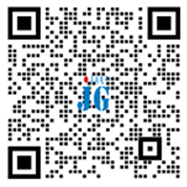




0512-66050595


product name:ST2263 Double Electric Measurement Digital Four Probe Tester
1、 Structural features
2、 Overview
2.1 Basic functions and standards:
The ST2263 type dual electrical measurement digital four probe tester is an intelligent comprehensive measurement instrument that uses linear or square four probe dual position measurement and improved van der Boer measurement method to test material resistivity/block resistance. The design of this instrument complies with GB/T 1551-2009 "Method for Measuring the Resistivity of Silicon Single Crystals", GB/T 1552-1995 "DC Four Probe Method for Measuring the Resistivity of Silicon and Germanium Single Crystals", and references the American A.S.T.M standard.
By using the transformation of current probe and voltage probe, two electrical measurements are carried out, and the data is subjected to dual electrical analysis. The influence of sample geometric size, boundary effects, probe unequal distance, and mechanical displacement on the measurement results is automatically eliminated. Compared with single electrical measurement straight or square four probe, it greatly improves accuracy, especially suitable for testing micro areas with oblique four probes.
2.2 Complete instrument composition: composed of ST2263 four probe host, optional four probe probe, four probe test bench, and ST2263 four probe testing software.
2.3 Advantages and characteristics:
1: Dual electrical testing mode, four probe testing mode with higher accuracy level.
2: Equipped with computer software, it can save, query, statistically analyze data, and print reports.
3: USB communication interface, with good universality and convenience. Compared to RS232 or 485 methods, these ports are generally difficult to configure on computers!
4: 8-speed ultra wide range, industry-leading. Generally, the gear range for peers is five to six.
5: It can be operated independently from a computer, with miniaturization and integrated manual/automatic operation.
6: Easy to operate and stable in performance, all parameter settings and function conversions use digital switch inputs, which is simple and eliminates the instability of analog locators.
2.4 Probe Selection: There are multiple options available for probes based on different material characteristics. Please refer to the "Reference Table for Model, Specification, and Feature Selection of Four Probe Probes" for details
1. Equipped with a high wear-resistant tungsten carbide probe to test the resistivity/square resistance of hard materials such as semiconductors, metals, and conductive plastics, such as silicon;
Equipped with spherical or flat headed gold plated copper alloy probe probes that do not damage the film, it can measure the resistivity/square resistance of conductive films on metal foils, carbon paper, and other conductive films, as well as conductive coating films on substrates such as ceramic, glass, or PE films, such as metal coatings, spray films, ITO films, capacitance convolution films, and other materials.
Equipped with a dedicated foil coated probe, it can also test the resistivity/square resistance of coatings on foils such as lithium battery electrodes.
Replacing with a four terminal testing fixture can also measure the body resistance of resistors, low and medium resistance of metal conductors, and contact resistance of switches.
2.5 Test bench selection: According to different material characteristics, there are multiple options available for the test bench. For details, please refer to the "Reference Table for Model, Specification, and Feature Selection of Four Probe Test Bench"
The four probe method is used to test solid or thin film materials, and SZT-A type, SZT-B type (electric), SZT-C type (fast constant voltage), or SZT-F type (solar cell) test bench is selected.
Select SZT-K type testing bench for testing slender rod materials using the two probe method
2.6 Scope of application: The instrument is suitable for testing the conductivity of conductors, semiconductors, and semiconductor like materials using the four probe method in semiconductor material factories, research institutions, and universities. Especially suitable for testing micro areas with oblique four probes.
3、 Basic technical parameters
3.1 Measurement range
Resistance: 1.0×10-6~200.0×103 Ω, resolution: 1.0×10-6 ~0.1×103 Ω
(1.0×10-6~ 20.00×103 Ω, resolution: 0.1×10-6 ~0.01×103 Ω)
(100×10-6~ 2.000×106 Ω, resolution: 10×10-6 ~0.1×103 Ω)
Resistivity: 10.0× 10-6 × 200 x 103 Ω cm, resolution: 1.0 × 10-6 ~ 0.1 x 103 Ω cm
Square resistance: 50.0 × 10-6 ~1.0 x 106 Ω/□, resolution: 5.0 × 10-6 ~0.5 x 103 Ω/□
|
Full scale display |
200.0 |
20.00 |
2.000 |
200.0 |
20.00 |
2.000 |
200.0 |
20.00 |
|
Test Current |
0.1μA |
1.0μA |
10μA |
100μA |
1.0mA |
10mA |
100mA |
1.0A |
|
Conventional range |
kΩ-cm/□ |
kΩ-cm/□ |
Ω-cm/□ |
mΩ-cm/□ |
||||
|
Basic error |
±2%FSB ±4LSB |
±1.5%FSB ±4LSB |
±0.5%FSB±2LSB |
±1.0%FSB ±4LSB |
||||
3.4 Four probe probes (optional or all)
(1) Tungsten carbide probe: Φ 0.5mm, linear probe spacing 1.0mm, probe pressure adjustable from 0 to 2kg
(2) Thin film square resistance probe: Φ 0.7mm, straight or square probe spacing 2.0mm, probe pressure adjustable from 0 to 0.6kg
3.5. Power supply
Input: AC 220V ± 10%, 50Hz Power consumption:<20W
3.6. Overall dimensions and weight:
Host: 220mm (length) × 245 mm (width) × 100mm (height), net weight: ≤ 2.5kg
Company Name: Suzhou Jingge Electronics Co., Ltd
Address: Room 202, Building 20, No. 199, Xiarong Street, East the Taihu Lake Ecological Tourism Resort (the Taihu Lake New Town), Wujiang District, Suzhou
MailCompilation:215200
Contacts :Grace
Phone:+8618762109211
Mailbox:sales@szjgdz888.com

Business customer service